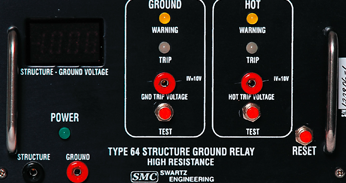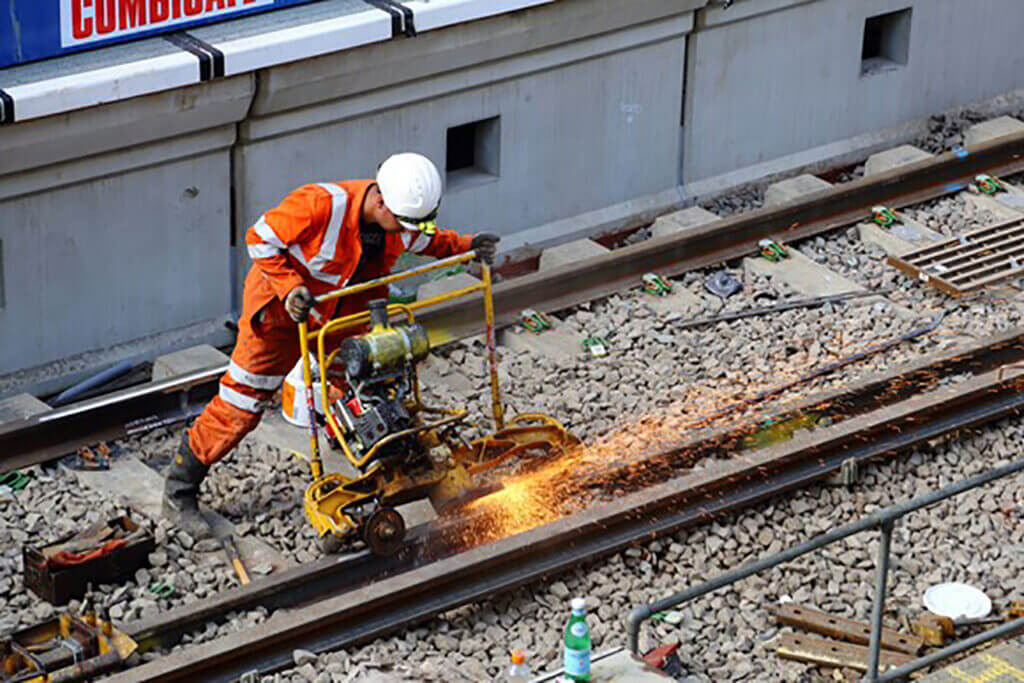 Ground relays are designed to provide dual functions as well as a high resistance ground for any type of DC switchgear. This type of relay is designed to protect the equipment as well as various enclosures across locomotives. The device will also alert personnel to hot and ground conditions in DC switchgear as well as alert rectifying devices. High resistance relays provide a superior level of performance and improved operational reliability through components that are built with a rugged level of construction. The device also comes with solid-state components for faster functions as well as self-diagnostic features that can prevent errors in reporting.
Ground relays are designed to provide dual functions as well as a high resistance ground for any type of DC switchgear. This type of relay is designed to protect the equipment as well as various enclosures across locomotives. The device will also alert personnel to hot and ground conditions in DC switchgear as well as alert rectifying devices. High resistance relays provide a superior level of performance and improved operational reliability through components that are built with a rugged level of construction. The device also comes with solid-state components for faster functions as well as self-diagnostic features that can prevent errors in reporting.
Some of the main features of a ground relay include a drawn-out construction and LED meter for accurate and easy to read voltage levels. The transient surge protection as well as the detection in AC or DC hot structure faults leads to improvements in operational reliability.
An internal power supply ensures that the device can operate even in extreme conditions and with auto compensation for a wide range of DC inputs. Our high resistant structure relay is designed with DC structure and rectifiers that can become grounded through breaches even throughout insulation. The enunciation will occur when voltage sensing technology activates the trip system passing the ground or when the relay introduces a self-diagnostic feature.
The overall system can determine when an internal failure has occurred and the relay will continue to alert personnel when leakage in fault occurs between the structure and the bus. The output is often connected through a lockout and the relay will automatically de-energize the entire station when hot structure functions are detected. DC and AC leakages and faults can be detected very early on in the hot structure trip and can be adjusted to suit the needs of your industry. Test buttons are also integrated into the ground structure to make sure that hot structure trips can be adjusted and appropriately tested over time. Managing lockout conditions and providing continuous operation through the device is verified with maintenance tools.
What is a Ground Fault?
Ground faults are unintentional electrical path that runs between a power source or a grounded surface. Ground faults are most common when equipment is damaged, defective, or so that unintended contacts cannot be made. Your body could provide a pathway to ground current for the current. You may be burnt, shocked, or even electrocuted.
Industry Standards About Ground Fault Protection
Ground relays are essential in electrical engineering, and several industry standards and regulations are relevant to these topics.
One of the critical standards related to ground relays is IEEE Standard C37.91, which provides guidelines for the testing and performing of protective relays used in electrical power systems. This standard includes specific requirements for ground relays, including their response time, sensitivity, and ability to distinguish between fault and non-fault conditions.
Another relevant standard is IEEE Standard C37.2, which outlines the design and performance requirements for high-voltage circuit breakers and switchgear. This standard includes requirements for ground fault protection, an essential safety feature in electrical power systems. Ground fault protection helps to prevent electrical shock and reduce the risk of equipment damage and fires caused by electrical faults.
Various regulations and codes govern using ground relays and fault protection in electrical systems. One of the most important is the National Electrical Code (NEC), published by the National Fire Protection Association (NFPA) and widely adopted in the United States.
The NEC includes detailed requirements for ground fault protection in various electrical systems, including branch circuits, feeders, and services. These requirements help ensure that electrical systems are safe and reliable and comply with relevant electrical codes and standards.

Ground Fault Occurrence
Ground faults can occur in one of two ways. They can be caused by accidental contact between a grounded metal or due to an insulation failure of an otherwise energized conductor. An insulation failure is when an energized conductor comes in contact with non-current-carrying material, which is then bonded to a portion of the equipment-grounding conductor.
Ground faults can occur in one of two ways. They can be caused by accidental contact between an energized conductor and normally grounded metal or due to an insulation failure of an otherwise energized conductor. An insulation failure is when an energized conductor comes in contact with non-current-carrying material, which is then bonded to a portion of the equipment-grounding conductor.
Ground relays have fault currents that return to the source along the equipment grounding conductors. A small portion of the fault current uses parallel paths like building steel or pipe.
Ground fault currents would not be as high if the ground return impedance was as low as the circuit conductors. The normal phase-overcurrent protection would remove them without much damage.
The ground return path's impedance is often higher. The fault is often arcing, and the fault current is further reduced by the impedance of this arc.
Sometimes the ground fault lies below the trip setting of your protective device. It may not trip until the fault becomes more severe.
Reliability
Ground fault relays can be complex and depend on the reliability and performance of all elements, including the solid-state sensor, monitor, and control wiring. The low-level ground fault protection can be negated if one element is not wired correctly, is inoperative, miscalibrated, or damaged. A ground fault that causes the neutral to be incorrectly or inadvertently grounded on the load side can cause the relay to trip. A nuisance outage can often lead to the maintenance crew or building owner disconnecting the ground fault relay to ensure that power is not interrupted. Ground fault relays require regular maintenance. Ground fault relay equipment depends on sensors, shunt trips, and switching devices. It is important to conduct periodic maintenance and test the equipment electrically by qualified personnel. There are components and mechanisms that could fail, malfunction, or lose calibration.
Adds Protection
A relay used to detect contact accidents between an electric path and ground caused by arc ground faults or complete ground faults resulting from the deterioration or destruction of the insulation in power cables or electric devices. When a ground fault occurs on the end receiving power, only the receiving end is cut off to prevent affecting the host power distributing substation in advance. Protection coordination with the host (i.e., the substation of the power company) is necessary to provide protection.
Products We Offer
Swartz Engineering strives to provide top-quality products to achieve our customers needs. Our products include:
- Type 76 DC Relay
- Type 82 DC Relay
- Swartz Engineering’s Type 64 Ground Relay
- Type 32 Reverse Current Relay
- Type 150 DC
- CSM Shield Monitor
- Metal Oxide Surge Arrestors
- Transducers
- MVIS SL Slim-line Contactor
- Fully-tested Power Control Rooms
- Swartz Engineering’s Portable Substations
Contact Us
Swartz Engineering has a wide range of high quality mining equipment for sale. The equipment we have at our disposal is ideal for the harsh conditions that underground mining often entails. Our goal is to offer you the best of the best in order to keep your mine running cost-effectively and at peak performance.
If you would like to learn more about ground relay specifications or about our relay, contact us today and see how it could benefit your business. Here at Swartz Engineering, we can discuss how these items can improve the reliability of your business and maximize your efficiency!
